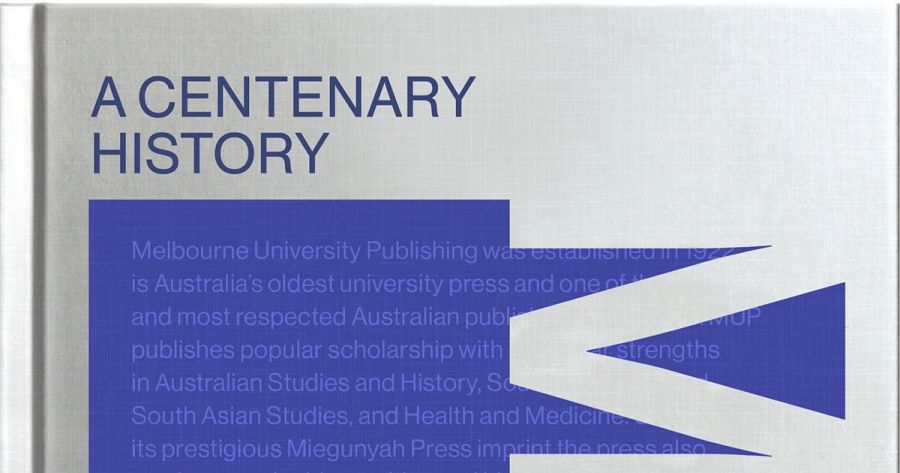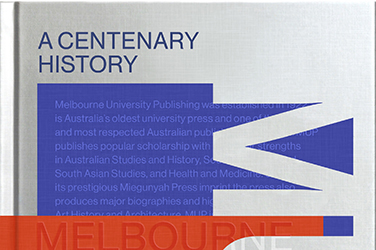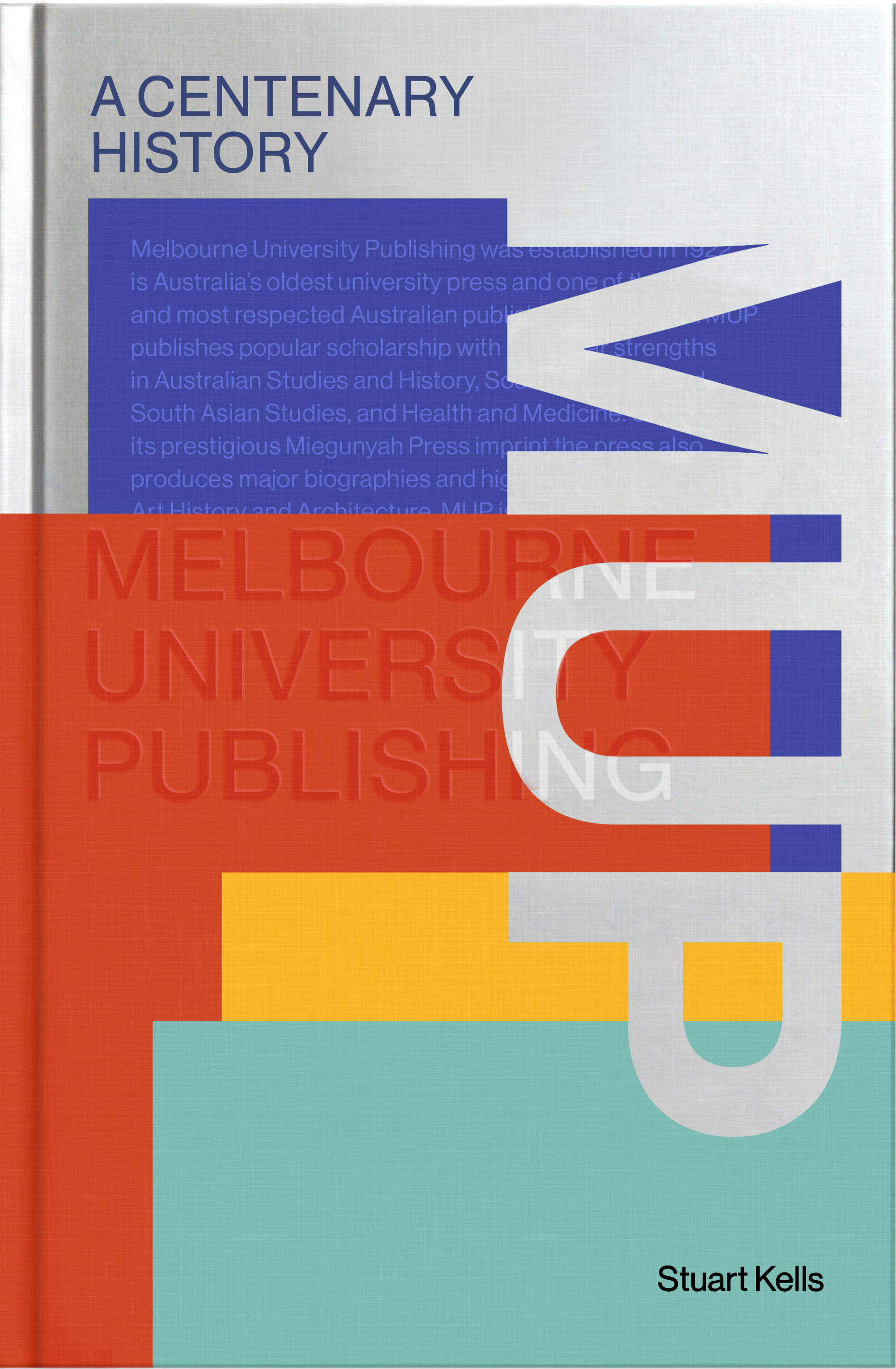
- Free Article: No
- Contents Category: Publishing
- Review Article: Yes
- Article Title: A press with purpose
- Article Subtitle: The MUP story
- Online Only: No
- Custom Highlight Text:
Publishers rarely become big news in Australia, university presses even less often. It was notable therefore that the departure in early 2019 of Melbourne University Publishing’s CEO, Louise Adler, and some members of the MUP board, became a matter on which so many of the nation’s political and cultural élite felt they needed to have an opinion. A strong coterie came out in her defence. This had much to do with Adler herself, who had courted their attention, published their books, and made MUP a story in its own right.
- Featured Image (400px * 250px):

- Alt Tag (Featured Image): Frank Bongiorno reviews 'MUP: A centenary history' by Stuart Kells
- Book 1 Title: MUP
- Book 1 Subtitle: A centenary history
- Book 1 Biblio: Miegunyah Press, $60 hb, 543 pp
- Book 1 Cover Small (400 x 600):

- Book 1 Cover (800 x 1200):

Kells shows that the debate at MUP over a university press’s purpose was not new. Academic publishing is ‘part of the wider publishing world, but also distinct from it’. The Press began in response to the need to provide the university’s students with affordable textbooks. It operated bookshops and a campus post office, hired out academic gowns, and eventually ran its own printery. It was as much general store as publisher, even while its founders had in view the great English university presses. And the problem of how to make academic publishing pay was there from the beginning.
MUP developed a varied and impressive list, starting in 1922, with History of the White Australia Policy to 1920 by Myra Willard, a University of Sydney graduate – a reminder that MUP has never been simply the ‘in-house publisher’ for its own academics. Being a nerd even back then, I first read Willard’s book – a later edition – while at school. I recall my doctoral supervisor, F.B. Smith, later showing me his first edition; it had John Monash’s signature inside. In such ways did MUP books find an audience beyond academic specialists.
Kells tells the MUP story through its managers (later called directors or CEOs), employees, authors, list, and relationship with the university and the book trade. He is a prolific and admired scholar of the book world. A historian with more general expertise might have paid less attention to MUP’s place in the wider industry, and to the book as the work of many hands and evolving technologies. It can be a thing of genuine beauty, utilitarian plainness, or hideous ugliness. (MUP: A centenary history is, as it happens, a notably handsome volume, published under the prestigious Miegunyah imprint.)
Kells is less successful in doing the admittedly difficult job of tracing the reception, significance, and impact of key MUP books, especially from the 1950s to 1990s. His heavy reliance on the Canberra Times for that period may well be a result of the title’s online availability at a time when authors were unable to visit libraries in the pandemic. There is the occasional inflated claim about a book’s impact. No evidence is presented for the unlikely proposition that the Encyclopedia of Papua and New Guinea hastened that territory’s independence. Kells also chose not to speak to Adler, a decision she has publicly criticised, while interviewing one of her predecessors, Brian Wilder, and the present CEO, Nathan Hollier. But the book succeeds because Kells grasps detail, writes elegantly, and presents the various sides of arguments and controversies with impartiality, although not without venturing informed opinion.
There have been plenty of controversies and arguments. Not everyone at Melbourne University believed that establishing a Press was a good idea. The Press was damaged by questionable financial dealings of its first manager, Stanley Addison, and his brother, who managed the campus bookroom. Addison would be pushed out in favour of Frank Wilmot, a fine poet with long involvement in publishing ventures and book retailing. Wilmot died suddenly in 1942 and was followed by the academic historian Gwyn James. He initiated a couple of decades of expansion that would eventually prove excessive and ruinous.
James’s departure brought on Peter Ryan in 1962. A war hero and accomplished memoirist, Ryan helped retrieve the Press’s finances and developed a strong list. Famously, he published Manning Clark’s six-volume A History of Australia, although it was James who initiated the relationship. Infamously, Ryan produced a brutal take-down of Clark in Quadrant, after the historian’s death. That betrayal was a rehearsal for Ryan’s late career as a right-wing columnist in which enviable literary skill was combined with unenviable nastiness.
Kells is kind to Ryan and over-reliant on Ryan’s account of himself. He could have made more use of Doug Munro’s recent forensic account of the Clark–Ryan relationship: History Wars (2021). Ryan’s successor, Wilder, was surely restrained in calling Ryan merely ‘eccentric’: the man kept a nude painting of his mistress on the office wall and bundled up and returned his retirement gifts on discovering that the university had overlooked his anointed successor in Wilder’s favour. (The latter, who had earlier published Colleen McCulloch’s The Thorn Birds, also knew a thing or two about the book game.)
Behind the MUP’s visible, public face – until Adler, a male one – there were often women editors who made it work. The most influential and important of them, Barbara Ramsden, was overlooked for the role of leading MUP. Adler was the first woman to be appointed, and some detected sexism lying behind the grumbling about her. That may well have been true, but it also became a way of deflecting valid criticism.
Despite the warnings of Adler’s supporters that it was returning to the academic cloister from which she had rescued it, MUP has flourished under Hollier. It has continued to publish books that grapple with big questions, arouse public debate, and attract readers beyond the academy.
That was predictable back in 2019 for anyone who did not have skin in the game, and it is a story of continuity from the 1920s. Even those who have only a vague familiarity with what the university said it wanted, or with Hollier’s achievement at Monash University Publishing across town, knew both that he was a strong contender for the role and was likely to do it well. Kells points to the echo of Wilmot, which is astute – both men democratic socialists with a strong commitment to national literature and a deep immersion in the world of books. Each, moreover, was appointed from outside Melbourne’s social, political, and cultural élite, although in contrast with Wilmot, Hollier has serious academic credentials, including a PhD.
It has been a good start to MUP’s second century.


Comments powered by CComment